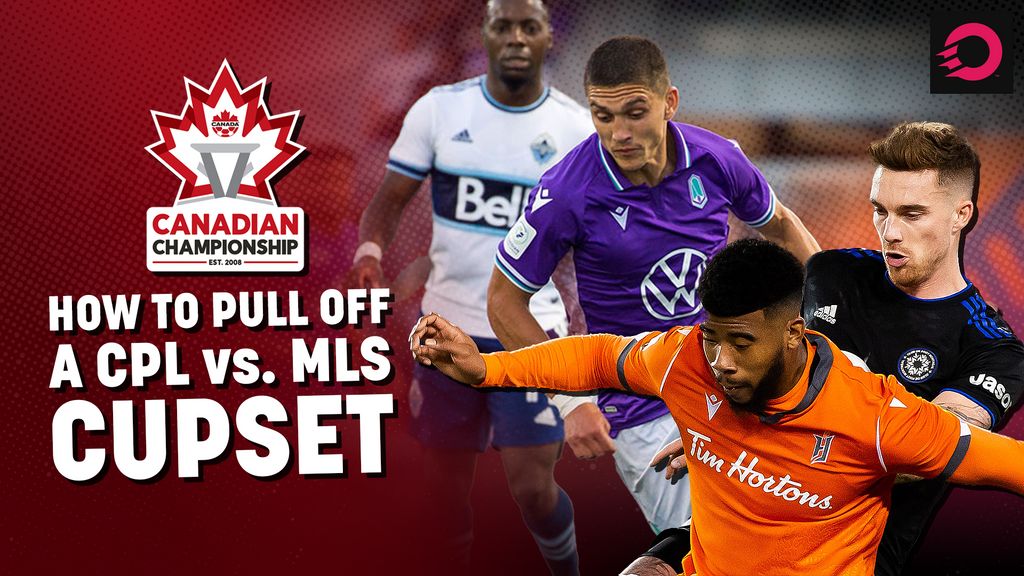Orchestrating a 'Cupset': How Forge, Pacific can beat Montréal, Whitecaps in Canadian Championship

The Canadian Championship semifinals kick off on Wednesday with Forge FC and CF Montreal squaring off for the third year in a row. Meanwhile, Pacific FC welcomes the Vancouver Whitecaps for the second installment of the Ferryside Derby.
These are familiar matchups for both teams. The last time Pacific and Vancouver met, the Canadian Premier League outfit pulled off a cupset at Starlight Stadium in 2021. That same year, Forge took Montreal to penalties at Tim Hortons Field, losing 8-7 in the shootout.
As the old saying goes, anything can happen in one-off matches. Vancouver and Montreal are dealing with more fixture congestion, plus the two CPL teams are in a rich vein of form.
Here is a deep dive into how the CPL teams can upset their MLS opposition and reach the Canadian Championship final.
How Forge FC can beat CF Montréal

Stop the supply to the 10s
CF Montreal entered their game against FC Cincinnati riding a six-game winning streak in all competitions, including four straight in MLS. A major factor towards their turnaround in form was their defence.
According to data from StatsBomb, Montreal’s defensive metrics had improved almost entirely across the board compared to their first seven MLS games.

But there was one metric that didn’t drastically change: high-press shots conceded. That translated to Cincinnati thumping Montreal 3-0.
Cincinnati’s last two goals were a direct result of pressing Montreal as they built from the back, swiftly recovering possession and immediately pouncing.
Normally, Sean Rea or Bryce Duke – or whoever plays underneath the No. 9 – receive long outlet passes from one of the centre-backs. Rea received more passes from a Montreal centre-back than any other player versus Cincinnati, while Joel Waterman was Duke’s most common link-up. Even Mathieu Choiniere is involved in similar sequences.
Here's Bryce Duke's passing map:

And here's Sean Rea's:

Cincinnati honed in on this for the second goal...

...and on another chance just before halftime:

It reared its ugly head again for the third and final goal of the night.
Brandon Vazquez makes it THREE for @fccincinnati! pic.twitter.com/QWYxFwLdvW
— Major League Soccer (@MLS) May 18, 2023
Containing Montreal’s attack
As for Montreal’s attacking threat, there hasn’t been a noteworthy change in their output. Sure, they were scoring multiple goals in every game during the winning streak, but it was unsustainable over a larger sample size. The shot map says as much.

Forge can easily replicate these tactics with their dynamic midfield trio of Alessandro Hojabrpour, Kyle Bekker and Aboubakar Sissoko. Plus, Manjrekar James is comfortable pushing high up the pitch and the fluid front three can exploit the central gaps.
As long as Forge are wary of Choiniere’s late runs – he’s attempted more shots than any other Montreal player this season – and ensure Offor is marked tightly, then the visitors should be able to stave off any threats.
How Pacific FC can beat the Whitecaps (again)

Aerial threats
If we’ve learned anything from the Vancouver Whitecaps’ season, it’s that they have had a torrid time at stopping aerials in their own box.
York United nearly pounced a couple times via Osaze De Rosario headers but to Vancouver’s credit, they nullified the threat pretty well.

Mathías Laborda is Vancouver’s most efficient defender in the air with a 78 per cent success rate and 4.58 aerial wins per 90 minutes this season, but he’s predominantly been used as a right-back. After him, Tristan Blackmon is second at 66 per cent. Ranko Veselinovic – the target of a few York United crosses – is at 57 per cent.
Pacific, meanwhile, have the likes of Easton Ongaro, Djenairo Daniels, Amer Didic and Sean Young who can give Vancouver’s centre-backs a hard time. The Whitecaps have also conceded 0.3 expected goals (xG) per 90 in MLS this season, which is quite high.
The Tridents have produced more than five shots per 90 off set pieces this season and have scored twice in those situations (via Didic). It’ll definitely be an area of focus.
Shutting down Gressel
One would assume that Ryan Gauld would lead all players in key passes, seeing as how he’s the playmaker and the team’s marquee Designated Player.
Yet it’s Julian Gressel who narrowly leads that battle with 26 to Gauld’s 25, with Gressel producing a team-leading four assists.
Gressel entered MLS as a right-back, or right wingback depending on the formation, so it’s only natural that he’ll drift into the right half-space as a midfielder for Vancouver.


Portland was clearly aware of this, and tailored its off-the-ball tactics to shut down Gressel. Sometimes it’s easier said than done thanks to the German’s vision and clever movement, but the Timbers executed their plans well.

On top of that, Portland and Dallas were relentlessly winning second balls. It led to Dallas’ opener…
Jesús Ferreira's at it again. 🐆
— Major League Soccer (@MLS) May 18, 2023
His 7th of the year pulls @FCDallas level. #DTID pic.twitter.com/wSepgl27qa
It also led to some decent chances for Portland.

Given Pacific’s ability to intensely press their opponents and recover possession quickly, this can play into their hands beautifully on Wednesday.

